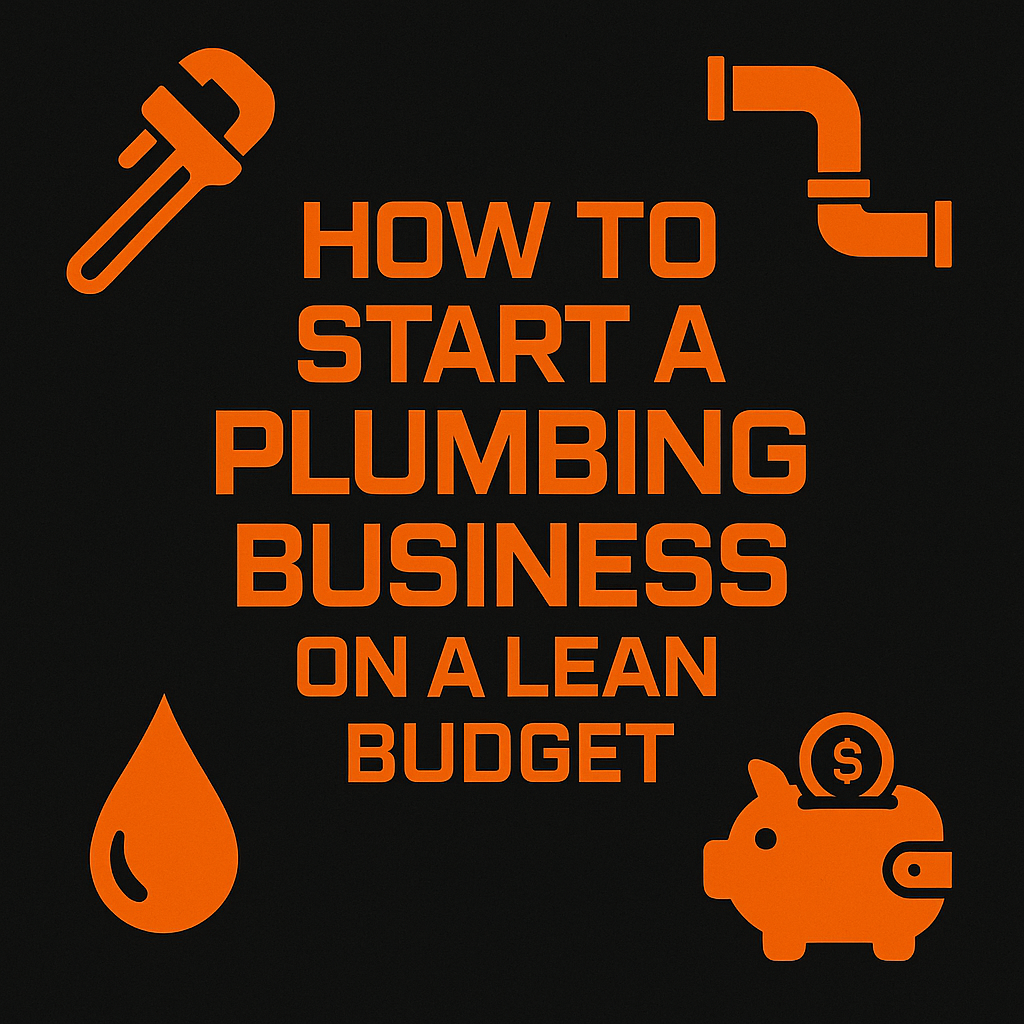How To Start a Plumbing Business on a Lean Budget
So you’ve got grit, a wrench, and somewhere in your pocket a couple hundred bucks. Starting a plumbing business doesn’t require a fat bankroll—just street smarts, savvy, and a plan that keeps costs down while you build momentum.
Written by: Miguel Gracia, Co-Founder of Armbar Marketing
Miguel has led SEO teams, worked with national brands, and analyzed marketing data at scale—but his focus is helping small service businesses win with strategies built for results. As a business owner himself, he knows the challenge of balancing growth and day-to-day operations. That’s why Armbar delivers clear, done-for-you marketing so you can focus on your customers while we drive the leads.
We don’t do fluff or vanity metrics. Our goal is simple—get your phone ringing and schedule filled. Every strategy we run is data-backed, localized, and battle-tested in real-world service businesses.

Listen Instead
Debug: The shortcode is working, but the "audio_file" ACF field is empty or not found for this post (ID: 3882).

1. Nail Down Local Regulations Without Bleeding Cash
Licensing and Permits
Every jurisdiction writes its own playbook. Hit your city or county website and hunt for plumbing contractor licenses. Many places post requirements—hours of training, bond amounts, exam fees—right online. In California, for instance, a C36 license runs about $250 to apply, plus exam fees (and you can study on the cheap with online resources) [CA CSLB].
Insurance and Bonding
Liability insurance and surety bonds keep you legal and protect clients. Shop around independent brokers or bundlers—often you can snag $1M/$2M general liability for under $800/year if you bundle with tools and auto coverage [SBA Guide]. Don’t skimp—one big leak can wipe you out.
2. Build Your Starter Toolkit—Only What Matters
Essentials First
Forget the top-shelf pro sets. Grab a reliable 6-in-1 screwdriver, an adjustable wrench, tongue-and-groove pliers, a good tape measure, and a drain snake. You can assemble a basic kit for under $200 from Home Depot or Lowe’s—watch for open-box deals or clearance bins.
Invest in High-ROI Gear
When you’re ready to level up, add a cordless power drain auger and leak-detecting camera. These tools open up higher-paying jobs—sewer scope inspections alone can net $150–$200 per job. Used models on eBay or local classifieds can be 40% off retail if you vet the seller.
3. Marketing That Doesn’t Cost an Arm and a Leg
Claim Your Local Listings
Create and verify your Google Business Profile, Bing Places, and Yelp page. Complete every field: hours, service areas, photos of your work. Optimized listings drive calls without ad spend—and show up when neighbors search “plumber near me.”
Leverage Community Boards and Nextdoor
Post a clear service offer on Nextdoor and local Facebook groups. Frame it as “New plumbing service in [Town]: Introductory pricing on drain cleaning.” A couple boosted posts at $20 each can reach thousands of locals.
Need deeper local-SEO help? Check out how we help plumbers kick start their business with plumbing marketing and administrative help!.
4. Lean Lead Generation—Get Paid Without Chasing Ghosts
Partner with Property Managers
Property managers need reliable subs. Draft a one-page flyer with your rates, references, and a photo of you in uniform. Hand-deliver to small apartment complexes and ask for 15 minutes of their time. One regular account can pay for ten cold calls.
Offer Referral Bonuses
Word-of-mouth rules in trades. Promise a $25 gift card for every new customer referral. You’ll pay only when you get paid—and happy customers love feeling like insiders.
5. Price Smart—Avoid Undercutting Yourself
Know Your Market Rates
Call three local plumbers as “mystery shoppers” to gauge going rates on common services—drain unclogs, fixture installs, leak repairs. Position your pricing 5–10% below average to win the first few jobs without eroding profit.
Package Services
Bundle high-margin tasks (like camera inspections) with basic services. Offer “Drain Plus” at a fixed rate: snake hairline clogs plus a quick camera check for $175. Packages simplify billing and boost average ticket.
6. Streamline Operations—Stay Lean as You Grow
Use Free or Cheap Software
Wave Accounting or Zoho Invoice handle invoicing and basic bookkeeping for free or under $15/month. Keep every receipt—you’ll thank yourself at tax time.
Schedule Efficiently
Batch nearby jobs into routes. Run morning drain clears in one neighborhood, afternoon installs in another. Fewer miles mean lower fuel costs and more time wrenching.
7. Scale Without the Overhead
Hire Subcontractors First
Instead of a full-time employee, contract licensed plumbers per job. You avoid payroll taxes and unemployment insurance—just pay them their cut and keep the admin light.
Reinvest in Growth
As profits rise, funnel 20% back into marketing—think targeted Facebook ads, local sponsorships (youth sports, community events), and modest SEO spend. A disciplined reinvestment plan fuels steady growth without stranding cash.
8. Keep Learning—Stay Ahead of the Curve
The plumbing trade evolves. Subscribe to trade mags like Plumbing & Mechanical or join the American Society of Plumbing Engineers. Learning new techniques and code updates keeps you competitive and justifies rate bumps.
9. Conclusion
Launching a plumbing business on a shoestring doesn’t mean you have to cut corners on quality. Nail your local regs, build a bare-bones but effective toolkit, market smart, and generate leads with zero waste. Stay lean, track every dollar, and reinvest wisely—and soon you’ll be running a thriving operation that started with little more than hustle and a wrench.
Explore our plumbing and sewage digital marketing services to keep your pipeline full.